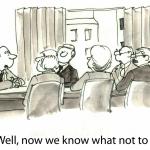Introduction
The sixth in-person Houston FP&A Board meeting brought together 28 senior finance professionals from leading organizations, including Honeywell, Leschaco Inc., Hewlett Packard Enterprise, Sysco, HP Enterprise, ENGIE, Dyno Nobel, American Bureau of Shipping, SLB, and many more.
The session focused on a highly relevant and practical theme: “FP&A Storytelling in a Data-Driven World.”
It was held in collaboration with global sponsor ReportWORQ and partner CFGI.
Facilitated by Larysa Melnychuk, CEO of the International FP&A Board, the gathering built upon prior discussions across 14 global chapters. Pedro Thena, CFO at Honeywell Process Solutions, shared a concise, actionable framework for FP&A storytelling.
The session opened with a key question: “What’s the critical factor for success in FP&A storytelling?”
Participants emphasized six essential elements: insights, clarity, process, data integrity, simplicity, and connection. These priorities reflect the perspectives gathered across the global FP&A Board community, reinforcing that storytelling is now a strategic communication skill at the heart of modern finance.

Figure 1: Members of Houston FP&A Board №6, March 2025
Why This Topic Matters
In an age where data volumes grow exponentially, and decisions must be made faster than ever, the ability to tell a compelling financial story is no longer a soft skill but a strategic imperative. The session emphasized that effective FP&A storytelling builds trust, drives decisions, and aligns diverse teams, especially as AI and automation reshape finance roles.
Figure 2
Key Frameworks and Models
Three foundational pillars structured the day’s discussion:
- Data – The raw material of the story. Quality, timeliness, and contextual relevance are critical.
- Narrative – The framing mechanism that turns data into a decision-enabling message.
- Visuals – The translation layer that enhances understanding and impact.
Figure 3
Participants also explored a range of models and tools:
- Narrative Arc Framework: From exposition to resolution, mirroring classical storytelling structures.
Figure 4
- Rappaport’s Shareholder Value Drivers: Used to anchor narratives in strategic business logic.
Figure 5
- Ethos, Logos, Pathos: Ethical, rational, and emotional appeals that support persuasion in communication.
Figure 6
Polling Insights
As part of the session, participants were invited to respond to a live polling question:
“What is the biggest barrier to effective FP&A Storytelling?”
All 33 attendees took part, and the results underscored a clear consensus around the challenges faced by finance professionals today:
- 42% pointed to poor quality of data as the most significant barrier, highlighting a persistent foundational issue that undermines even the best narratives.
- 33% cited a lack of time, reflecting the high-pressure, fast-paced environments in which FP&A teams operate.
- 12% mentioned a nonsupportive business culture, pointing to organizational friction or resistance to change.
- 9% identified inadequate skills, emphasizing the need for better training in communication and storytelling.
- Just 3% selected outdated technology, suggesting tools are less of a bottleneck than people and processes.
These findings align with global sentiment and reinforce that data quality and organizational prioritization remain core challenges.
Group Work Outputs
Participants broke into three groups, each exploring a core pillar of storytelling.

Figure 7: Members of Houston FP&A Board №6, March 2025
Group 1: Narrative
This group focused on building a compelling and structured story that resonates with stakeholders.
1. Prepare
- Know audience
- What are we solving
- Data
- Test
- Alliances
2. Deliver
- Less is more
- Tie and quote
- Control room
3. Call to Action
- Identify people
- Integrate feedback
Expanded framing:
- What are we solving for?
- What are our findings?
- Headline → support
- KPI that tie back
- Takeaways → actions
- Time management
- Test it out
- Control the room
- Build alliances
Group 2: Visuals
This group discussed what makes visuals effective in financial storytelling, emphasizing simplicity, comparison, and trust.
- Consistency
- Compelling story
- Pictures (not tables)
- Toggle visuals to compare and highlight changes
- Clarity of what we’re looking at
- Data simple
- Sometimes, a simple table tells enough
- Clean & concise
- Reliable
- Span: Past – Current – Forward-looking
Group 3: Data
Group 3 explored the question: “How can we effectively identify and analyze relevant data for our narrative?”—focusing on data readiness, integration, and the linkage between data infrastructure and storytelling outcomes.
- Central NSR CoA
- Data Gov Process
- Map out data sources
- Data Warehouse / Data Lake
- Reduce complexity / Data Scrubbing
- Tune Models
- Efficiency & Speed
- Review / Refresh
Linking data to models
- Excel
- Use Power BI to scale

Figure 8: Members of Houston FP&A Board №6, March 2025
Across all groups, a recurring theme was the importance of simplification, relevance, and timing. The synthesis echoed global findings: the most successful FP&A stories are those that are actionable, trusted, and tailored.
Conclusion
As FP&A evolves, storytelling is emerging as a core competency — one that integrates data fluency, visual literacy, and communication mastery. This Houston Board meeting reaffirmed that while tools and technologies can support storytelling, the real difference lies in human skill: connecting, influencing, and driving business outcomes.
Looking ahead, the FP&A community must continue investing in both talent and tools.







